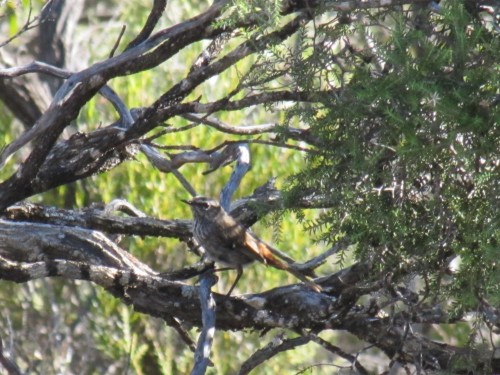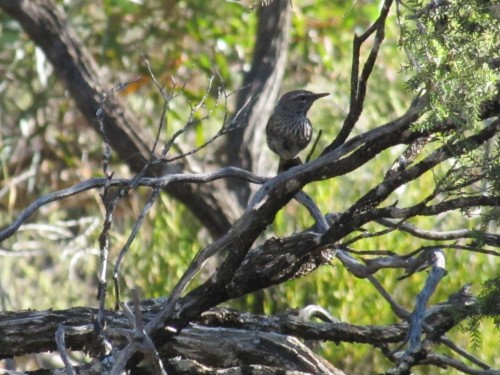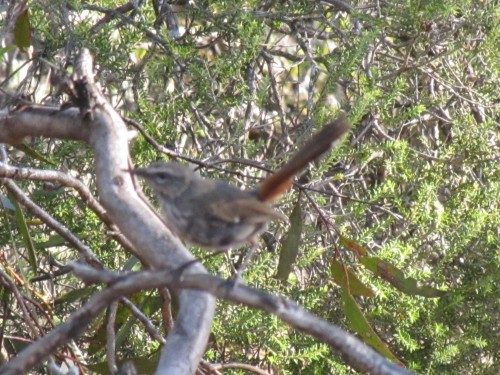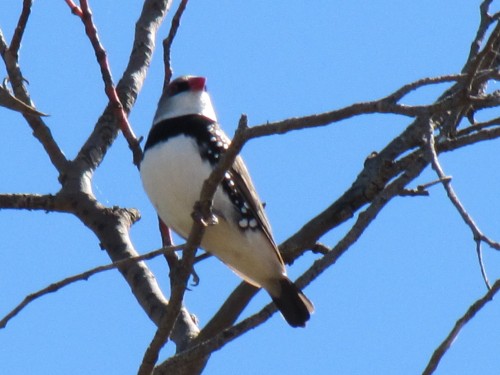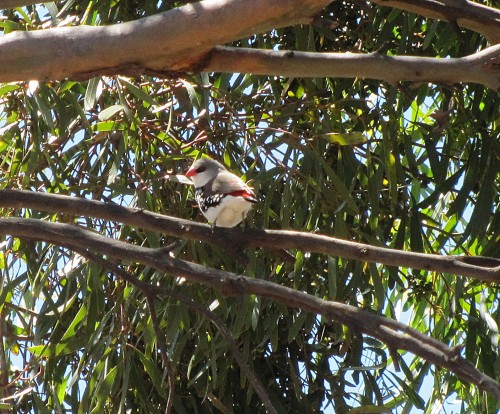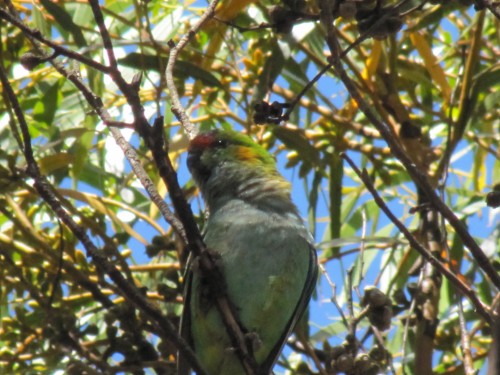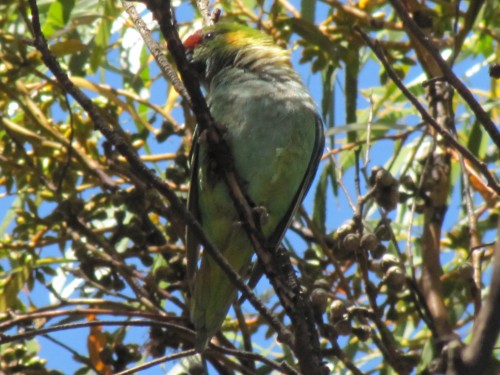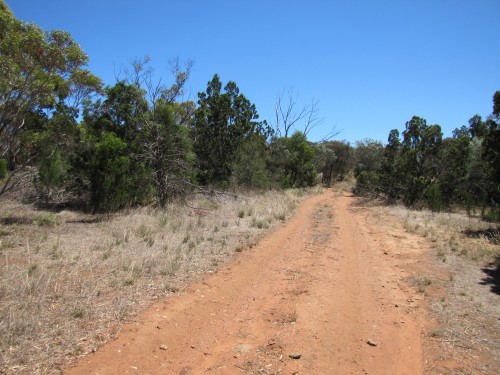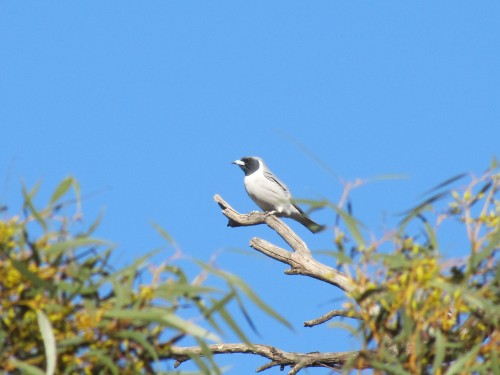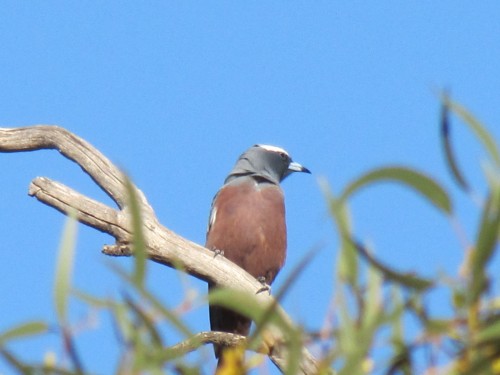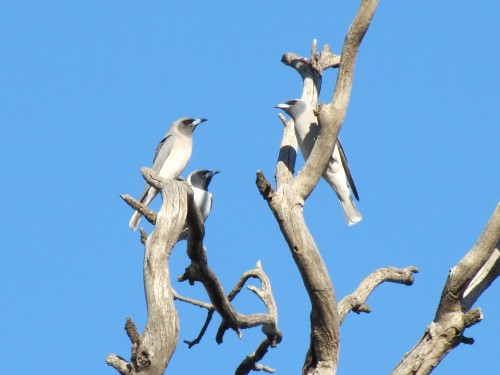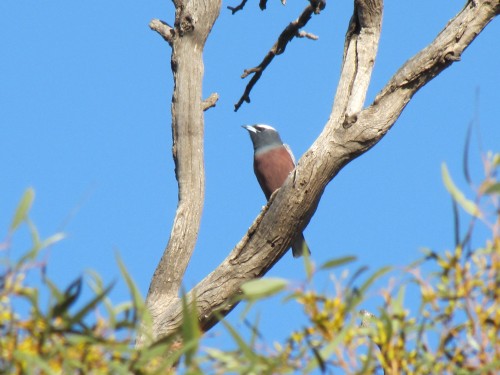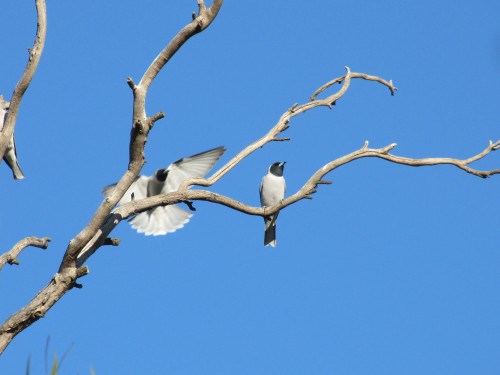A Shy Heathwren comes out of hiding
One of the more interesting birding spots near my home in Murray Bridge South Australia is Lowan Conservation Park near Bowhill, about a 40 minute drive to the north east. This park is mainly mallee eucalypt scrub with some native pine (Callitris) and smaller shrubby undergrowth, including acacias, eremophilas, spinifex and some annual flowering plants.
The birdlife in this park can vary from overwhelming in number to very few. It all depends upon what is flowering at the time. When many of the mallee trees are in flower the honeyeaters flock there in large numbers. When nothing is flowering I’ve struggled to list more than a dozen species – and sometimes no honeyeaters, with the possible exception of a solitary Red Wattlebird. It can be very rewarding – or downright frustrating.
On a visit early last year I was delighted to catch a glimpse of a Shy Heathwren, not a species which is common in this region. True to its name it proved to be elusive but very vocal. A birding friend had a bird field guide application on his phone, so he played the call of this species. Within seconds it was almost hopping around our feet. I was therefore able to get a few not-so-brilliant shots. Wish it had sat still for more than a half second!
As a result of this experience I just had to go and buy myself a smart phone – along with a bird guide app.
UPDATE: I have since bought a smart phone AND have a field guide app on it. I haven’t used it much for calls out bush, but my grandchildren think it is really cool. [sigh]
A more recent article about this park can be found here.
Updated July 2015.
Diamond Firetail finch, Brown’s Road, Monarto
Diamond Firetails are one of Australia’s more beautiful finches and I am pleased that I can see them within a short distance of my home in Murray Bridge, South Australia. In fact, we have occasionally seen this species in our garden, and on one occasion one even came to one of our bird baths.
Diamond Firetails are widespread in this region without being very common anywhere. In my experience they are usually encountered singly or in a small flock of only a few. The bird in several of the photos today was one of about four we saw at Brown’s Road, Monarto near Murray Bridge several years ago. The photos aren’t brilliant because these birds were rather wary and didn’t allow me to approach too close, even with the 20x zoom on my camera.
Australian Bird Week
We celebrate all kinds of special days and special weeks, so why not a special week just to celebrate the wonderful birds of Australia?
In a way – that is what this site is all about – celebrating the fact that we have an abundance of wonderful birds in this land of ours.
This celebration runs from today until the 25th October 2013. You can find out more about Australian Bird Week by clicking here.
As a part of the week, organisers are asking Australians to vote for their favourite bird (click here).
Which species will you vote for? Below is a photo of my favourite bird.
Purple-crowned Lorikeets at Brown’s Road, Monarto
I have been trolling through a few photos taken over two years ago, looking for some I haven’t shared here on this site. On this occasion I took John Tongue and family birding to a site about 15 minutes’ drive from home. Brown’s Road, near Monarto just west of Murray Bridge here in South Australia is something of a birding mecca for birders in this locality. The Birds SA people, as well as individuals, often arrange field trips to this locality.
Strange as it may seem, after living so close for over 25 years, this was my first visit. It was quite a warm day and the birding was a little slow but we did see a few good species, including the Purple-crowned Lorikeets shown in the photos today. Below I have also shown the vegetation typical of this area. While it is predominantly mallee eucalypt, there are also consideration native pine stands (Callitris spp) and quite a few introduced plant species due to the area being planted up several decades ago.
Two kinds of Woodswallows
I have to admit that I enjoy doing the clothes washing. It gets me outside in the sunshine and fresh air. except when it is raining and blowing a gale. On those occasions I usually hang the washing on clothes horses on the back veranda.
The main reason I enjoy doing the washing is to do a spot of birding while hanging the clothes on the clothes line, or when getting in the clothes once they have dried. Last Saturday was a beautiful spring day here in South Australia. we’ve had some foul windy weather this spring some it was a pleasure to get out in the beautiful sunshine.
As I was taking the dry clothes off the line and flock of about 20 birds flew overhead, circled high above our garden and then swooped down and settled on several trees – all only a few metres from where I stood. I immediately identified them as woodswallows, but to my excitement, there were actually two different species. Forgetting all about the clothes I raced inside, fired up my camera and started taking photos.
The flock was made up of about 10 Masked Woodswallows and 10 White-browed Woodswallows, both great species to see at any time. The last time I saw either species here was in the year 2000. The White-browed I hadn’t recorded in our garden since the early 1990s.
I took quite a few photos, the best are shown here. After a stay of about 10 minutes they all flew off together. Later I read online of several other sightings of these two species in various places around the state. They sure get around.
